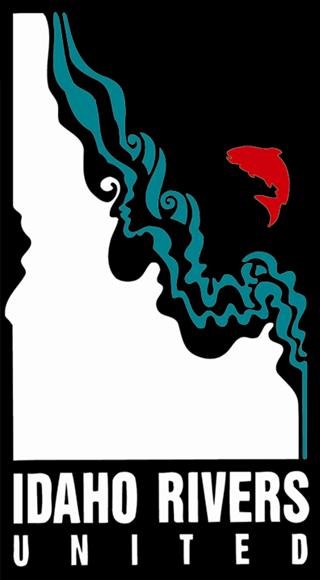FINAL RECORD OF DECISION RELEASED FOR THE STIBNITE GOLD PROJECT
An aerial image of the South Fork and Main Salmon River shows the watershed of what will be negatively impacted by Stibnite Mine. Photo credit: EcoFlight
Contacts:
Nick Kunath, Conservation Director, Idaho Rivers United, (208) 908-9232
Sydney Anderson, Mining & Policy Manager, Idaho Rivers United
FOR IMMEDIATE RELEASE
MCCALL, ID – On January 3, 2025, the U.S. Forest Service issued its Final Record of Decision (ROD) for the Stibnite Gold Project, located 14 miles outside of Yellow Pine, Idaho. The decision approves a mine plan that includes the construction of three massive cyanide vat leaching open pits, significantly expanding the area of disturbance. The approved plan will double the size of the impacted area compared to the historic mine footprint, with more than 70% of the project’s disturbance occurring on public lands. This development is all set within the vital headwaters of the South Fork of the Salmon River, a region of immense ecological and cultural importance.
“It is crucial to recognize that this is primarily a gold mine. The antimony produced from this project, given current U.S. demand, would supply just three years' worth of use. However, the environmental impacts of the mine, even with the proposed mitigation measures, will persist for multiple generations, leaving a lasting scar on Idaho’s landscape and people,” explains Sydney Anderson, Idaho Rivers United’s Mining & Policy Manager.
Idaho Rivers United acknowledges the nation’s need for minerals to support modern infrastructure and technology. However, we firmly believe that some places are too ecologically sensitive to mine. The Stibnite Gold Project, with its extensive environmental risks, should not proceed in a watershed as vital as the South Fork of the Salmon. This river system supports critical habitat for threatened fish species, including Chinook salmon, steelhead, and bull trout, and plays a key role in maintaining the ecological integrity of the region.
"It is deeply disheartening that projects as destructive as the Stibnite Gold Project are not required to adopt stronger protection and mitigation measures,” says Anderson. “Time and again, companies like Perpetua Resources are allowed to alter our landscapes with minimal accountability for the damage they cause, a reality enabled by the outdated and deeply flawed 1872 Mining Law."
The Final Record of Decision comes just two weeks after the Forest Service published their response to Objections on December 20th. More than 130 individuals and organizations submitted substantive concerns to project features and analysis included in the Final Environmental Impact Statement. Unfortunately, the vast majority of the issues raised by Idaho Rivers United and our partners were disregarded and not meaningfully addressed.
The permitting process for the Stibnite Gold Project is far from complete. The decision additionally requires Perpetua to finalize numerous plan components that have not been made public at this point, including the Burntlog Route Access Plan, Fugitive Dust Control Plan, and the Stormwater Pollution Prevention Plan, among others. Unfortunately, while all of these project components carry real environmental significance, they will not be reviewed by the public in the same light that other project plans.
Additionally, the Forest Service must still approve additional revisions to Perpetua Resources’ Plan of Operations, evaluate and accept reclamation cost estimates, and review financial assurances. Furthermore, Perpetua Resources must obtain several additional permits from state agencies before any mining activities can commence. These include water quality permits and air quality compliance approvals, all of which require thorough analysis and public input.
IRU has long been an advocate for the protection of Idaho’s rivers and the communities that depend on them. We are committed to working with our partners to scrutinize and challenge any permits or plans that fail to adequately safeguard public health, water quality, and the environment. Many of the draft permits for this project have already raised significant concerns about insufficient analysis and a lack of enforceable protections.
IRU will continue to advocate for the preservation of Idaho’s irreplaceable river systems, ensuring that decisions are guided by sound science and the voices of the communities impacted by this project.
###


